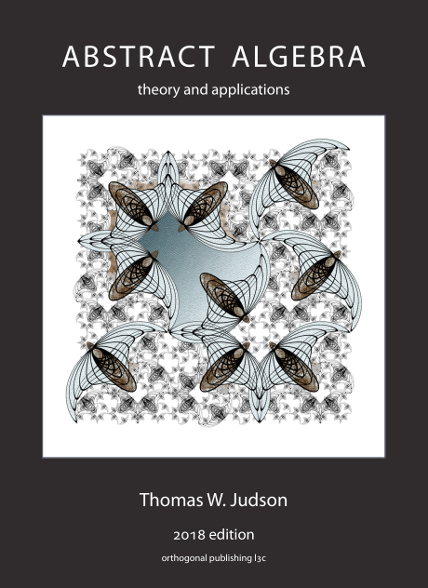Section 3.2 Check digits
Every published book can be identified by its International Standard Book Number. Before 2007, the ISBN was a 10-digit number, and we will call this variant ISBN-10. If \(d_1 d_2 d_3 \cdots d_{10}\) are the digits of a valid ISBN-10, then they will always satisfy the modular equation:
Example 3.9.
The ISBN-10 for Abstract Algebra: Theory and Applications, on which this text is based is 1944325069. We can check that this is a valid ISBN-10 because
The way that ISBN-10 numbers are assigned is that the first 9 digits are chosen and then the last one is solving for the last digit
If the formula yields \(d_{10}=10\text{,}\) then it can't be represented by a single digit, and so instead the last digit is written as X.
Proposition 3.10.
If \(d_1 d_2 \cdots d_{10}\) is a valid ISBN-10 code, then changing any single digit makes the code invalid, so \(d_1 \cdots d_{i-1} d_i' d_{i+1} \cdots d_{10}\) is not valid if \(d_i \neq d_i'\text{.}\) Also, transposing any pair of digits will make the code invalid, meaning that if \(i \lt j\) and \(d_i \neq d_j\text{,}\) then
is not a valid ISBN-10.
Proof.
We saw that we can always solve for \(d_{10}\text{,}\) but by using modular inverses, we can also do the same for other digits. First, we can rearrange the modular equation to get:
By distributing, we can simplify \(-(11-i)\) to \(i-11\text{,}\) which is equivalent to \(i\text{.}\) Since \(1 \leq i \leq 10\text{,}\) then \(i\) is relatively prime to \(11\text{.}\) By Proposition 3.4(6), \(i\) has a multiplicative inverse \(b\text{.}\) Therefore,
so \(d_i\) is determined by the other digits, and any other \(d_i'\) will not be a valid ISBN.
Now suppose that \(i \lt j\) and \(d_i \neq d_j\text{.}\) For the purpose of contradiction, we assume that \(d_1 \cdots d_n\) and the transposition \(d_1 \cdots d_j \cdots d_i \cdots d_n\) are both valid ISBN-10s. Therefore, we have the modular equations:
By subtracting the second equation from the first, we get:
Because \(1 \leq i \lt j \leq 10\text{,}\) then \(1 \leq j-i \leq 9\text{,}\) so \(j-i\) is relatively prime to \(11\text{.}\) Thus, we can multiply by the multiplicative inverse of \(j-i\) to get \(d_i - d_j \equiv 0 \pmod{11}\text{.}\) Both \(d_i\) and \(d_j\) are at most \(10\text{,}\) so the only way for \(d_i - d_j\) to be divisible by \(11\) is if \(d_i = d_j\text{,}\) a contradiction.
